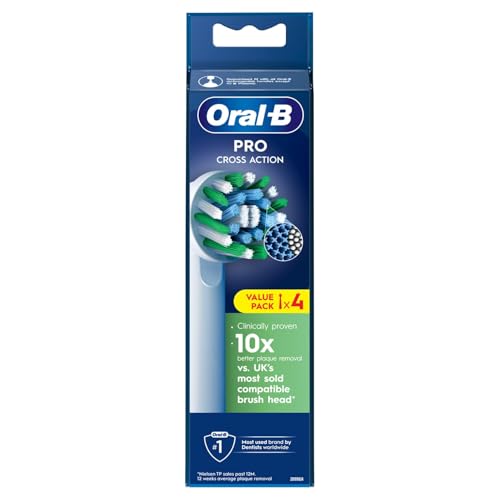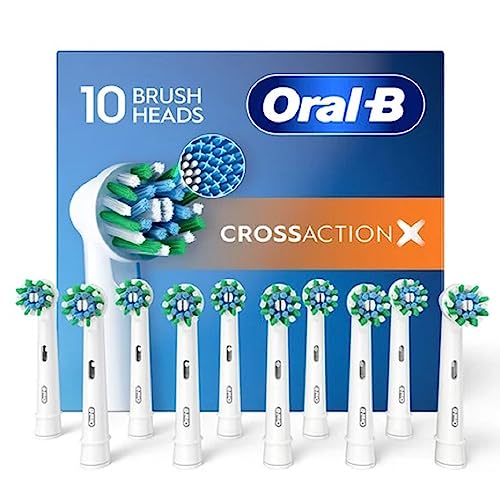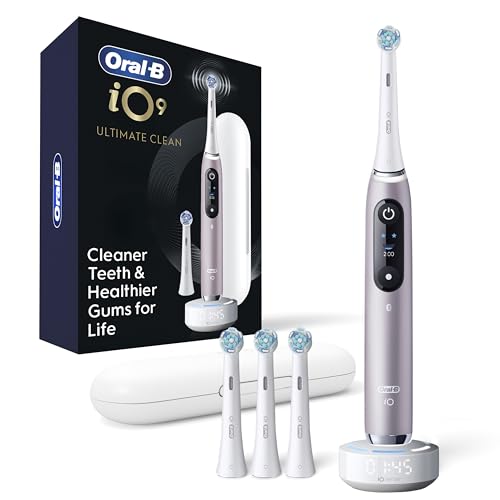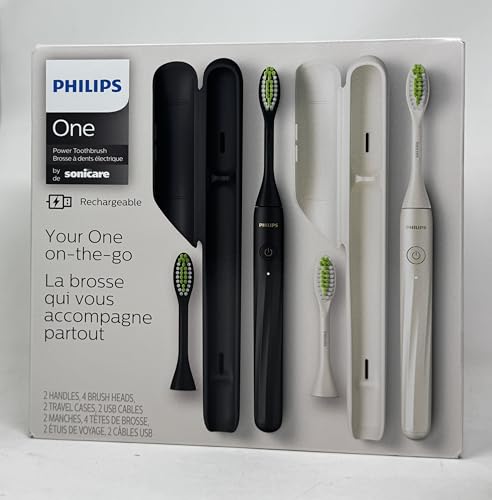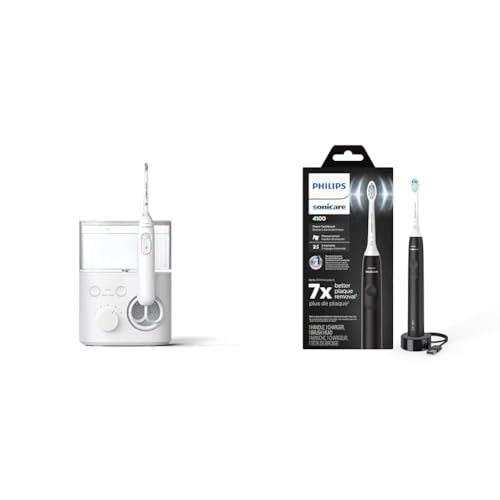
When it comes to the ultimate battle of electric toothbrushes, Oral-B versus Sonicare stands as the age-old rivalry that defines oral care innovation. Both brands dominate the global market, promising brighter smiles, cleaner teeth, and healthier gums. Yet, if you’ve ever stood in the toothbrush aisle feeling utterly confused about which one deserves your money, you’re not alone.
In this in-depth guide, we’ll dive headfirst into the Oral-B vs. Sonicare showdown, breaking down everything from brush head technology to battery life, brushing experience, and real-world results. By the end, you’ll know exactly which brand fits your brushing style and dental goals.
A Tale of Two Titans in Oral Care
The Legacy of Oral-B

Oral-B has been a household name since the 1950s, when it first revolutionized manual toothbrush design. Now, backed by Procter & Gamble, Oral-B’s electric lineup — particularly the iO series — blends mechanical precision with AI technology.
Key highlights include:
- Oscillating-rotating technology for a dentist-style clean.
- Pressure sensors to prevent gum damage.
- Smart tracking apps that guide brushing zones in real time.
The Sonicare Revolution

Philips introduced Sonicare in the 1990s, pioneering sonic vibration technology that transformed electric brushing forever. Instead of rotating, Sonicare uses high-frequency vibrations (up to 62,000 brush movements per minute) to dislodge plaque and push fluid between teeth — even beyond where bristles reach.
Signature strengths include:
- Gentle sonic pulses for sensitive gums.
- Whitening modes that polish enamel.
- Superior battery life, often lasting up to 3 weeks per charge.
Oral-B vs Sonicare Technology Breakdown
Let’s strip away marketing fluff and dig into the core technology that defines both brands.
| Feature | Oral-B | Sonicare |
|---|---|---|
| Motion Type | Oscillating-Rotating | Sonic Vibrations |
| Brush Strokes | 8,800–10,500 per minute | Up to 62,000 per minute |
| Brush Head Shape | Round | Oval/Elongated |
| Pressure Sensor | Yes (Visible Ring Indicator) | Yes (Haptic Feedback) |
| Smart App Integration | Yes (AI-based) | Yes (Real-time Feedback) |
| Battery Life | 7–14 days | 14–21 days |
| Noise Level | Slightly Louder | Noticeably Quieter |
The Brushing Experience — Feel the Difference
Oral-B’s Bold, Mechanical Clean

Using an Oral-B feels like getting a professional polishing at your dentist’s office. The round brush head spins and pulsates, scrubbing away plaque with noticeable force. You can almost feel it working.
- Ideal for people who want that “deep-clean” sensation.
- Especially effective along the gumline and for removing coffee or tea stains.
- Slightly noisy, but you’ll forgive the hum for its sheer power.
Sonicare’s Gentle Whisper of Cleanliness

By contrast, Sonicare feels silky and refined. The vibrations generate microbubbles that clean beyond where the bristles touch, making it feel like a spa treatment for your mouth.
- Perfect for sensitive teeth or people prone to gum bleeding.
- Quieter and smoother experience.
- Takes a few uses to adjust to the unique “buzzing” sensation.
Plaque Removal Performance
Clinical studies consistently show both brushes outperform manual toothbrushes. However, they achieve results differently:
- Oral-B’s oscillating heads are superior for mechanical plaque removal, particularly on molars and gum edges.
- Sonicare’s fluid dynamics reach deeper between teeth, excelling in interdental cleaning.
If your dentist often spots tartar buildup or stains, Oral-B might edge ahead. If your concern is gum health or inflammation, Sonicare wins that round.
Gum Care and Sensitivity
Oral-B for Precision Gumline Cleaning

The pressure sensors on Oral-B models actively alert you (often via color rings or app notifications) when you press too hard, protecting your gums. The smaller, round heads also make it easier to navigate tight corners and braces.
Sonicare for Gentle Gum Massage
Sonicare’s vibrations stimulate blood circulation in gums, which promotes long-term gum health. Its Gum Health and Sensitive modes make it the go-to choice for users with receding or tender gums.
Battery and Charging Comparison
This is where Sonicare flexes its efficiency muscles.
| Metric | Oral-B iO Series | Philips Sonicare DiamondClean |
|---|---|---|
| Battery Type | Lithium-ion | Lithium-ion |
| Battery Life (Days) | 10–14 | 20–21 |
| Full Charge Time | ~3 hours | ~24 hours |
| Charging Base Type | Magnetic / Standard | Glass Cup or Inductive Stand |
In short: Sonicare lasts longer, but Oral-B charges faster. If you travel frequently, Sonicare’s 3-week endurance is unbeatable.
Brush Head Design and Variety
Oral-B Brush Heads
Oral-B offers a diverse lineup of round brush heads, each with specific purposes:
- CrossAction – angled bristles for deep plaque removal.
- 3D White – polishing cup for stain reduction.
- Sensitive Clean – extra soft for gentle cleaning.
These are affordable and easy to find globally, adding to Oral-B’s convenience factor.
Sonicare Brush Heads
Sonicare’s oval heads cover more surface area per stroke. Their advanced brush head range includes:
- C3 Premium Plaque Control
- G3 Gum Care
- W DiamondClean for whitening
They tend to be more expensive but last slightly longer.
Smart Technology and App Integration
Both brands have embraced smart tech, but in distinct ways.
Oral-B’s AI Brushing Coach

Oral-B’s latest iO models feature AI-driven motion sensors that track brushing zones and give instant feedback via the app. If you miss a spot, it tells you — in real-time. It’s like having a digital dentist monitoring your technique.
Sonicare’s Progress Tracker

Sonicare focuses on consistency. The app logs your sessions, highlights missed areas, and adapts to your routine. It’s less flashy but feels more like a personal wellness tracker than a scolding instructor.
Price and Value for Money
| Model | Oral-B Price Range | Sonicare Price Range |
|---|---|---|
| Entry-Level | $40–$80 | $50–$100 |
| Mid-Range | $100–$160 | $120–$200 |
| Premium | $200–$400 | $200–$350 |
While both offer premium features, Oral-B tends to be more affordable across the board. Replacement heads are also slightly cheaper.
Noise Levels and Comfort
If your partner complains about your toothbrush sounding like a power tool at 6 AM, Sonicare may save your relationship. Oral-B’s oscillating motor is distinctly louder, while Sonicare hums quietly in the background — more “Zen,” less “drill.”
Whitening Capabilities
Both brands now include whitening modes, but Sonicare’s DiamondClean series takes the crown here. Its sonic pulses lift surface stains gradually, enhancing natural shine without abrasives. Oral-B’s 3D White head also delivers good results, especially for coffee drinkers, but the effect is more mechanical than luminous.
Replacement Costs Over Time
- Oral-B brush heads: typically $6–$8 each (replace every 3 months).
- Sonicare heads: around $10–$12 each (replace every 3–4 months).
Over five years, Sonicare’s heads may cost about 20–30% more, but they also tend to last longer and feel more premium.
User Feedback and Dentist Recommendations

Surveys and dentist opinions generally agree on one thing: both brands deliver excellent oral health outcomes. Dentists often recommend Oral-B for those with plaque-prone teeth or braces, and Sonicare for users with sensitivity or gum concerns.
Real-world users echo similar experiences:
- Oral-B: “Feels like a professional clean every morning.”
- Sonicare: “My gums have never felt healthier.”
Environmental and Design Considerations
Sonicare’s sleek design and quiet operation make it a favorite for design-conscious users. Oral-B leans toward function over form, with more rugged designs. However, Oral-B’s newer iO series narrows this aesthetic gap with magnetic chargers and OLED displays.
Both brands now offer recycling programs and use biodegradable packaging, which is a plus for eco-minded users.
Verdict — Which Electric Toothbrush Wins?
It depends on you.
- Choose Oral-B if you want:
✅ A deep, mechanical clean
✅ Lower cost brush heads
✅ AI coaching and precision cleaning - Choose Sonicare if you want:
✅ A quieter, gentler experience
✅ Longer battery life
✅ Superior gum care and sleek design
In truth, both deliver dentist-level results — the decision comes down to personal preference, brushing style, and sensitivity.
Final Thoughts
When comparing Oral-B versus Sonicare, we’re not deciding between good and bad — it’s between great and greater. Each brand excels in different areas. Think of it like choosing between a sports car and a luxury sedan: both get you there, but one makes your heart race, while the other makes the journey smoother.
If you crave power and precision, Oral-B is your match.
If you value elegance and comfort, Sonicare wins your smile.
FAQs
1. Is Sonicare better for sensitive teeth?
Yes. Sonicare’s sonic vibration technology is notably gentle, reducing irritation and promoting gum health — ideal for users with sensitivity.
2. Which removes more plaque — Oral-B or Sonicare?
Studies show both are excellent, but Oral-B’s oscillating motion tends to remove slightly more plaque, especially around the gumline.
3. How often should I replace the brush head?
Every three months for both brands, or sooner if the bristles show signs of wear.
4. Can I use Oral-B or Sonicare with braces?
Yes, though Oral-B’s small round head is often preferred for maneuvering around brackets and wires.
5. Which offers the best value overall?
For pure cleaning performance and affordability — Oral-B.
For luxury experience and comfort — Sonicare.

